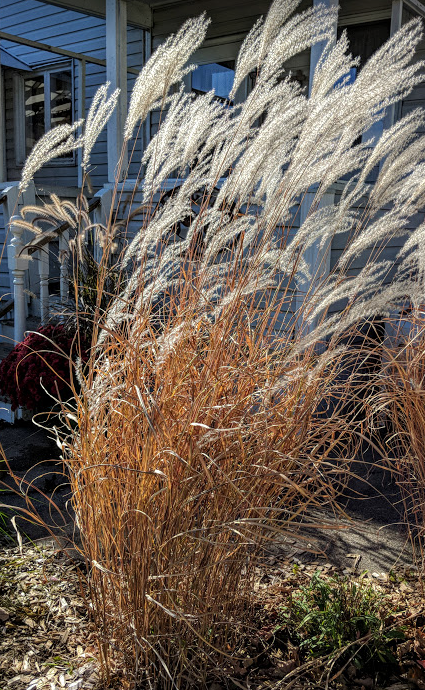Click below to listen to my 2 min. Garden Bite radio show: Cutting back ornamental grasses
Audio PlayerAt some point, soon we hope, it’ll be time to start cutting back those ornamental grasses. They’re really looking pretty winter weary now.

You’ll be ready when it’s time… that will be when the snow’s gone and it’s a bit drier out there! Hand cutting or an electric hedge trimmer can be used to clean up the tops of grasses.

Warm season grasses such as…
- Miscanthus
- Switchgrass
- Big and little bluestem
- Prairie dropseed
- Indian grass
…die back at the crown of the plant. Don’t worry about cutting them back too low. Their buds are at the root-shoot junction which is often buried in the soil.
Tie large tops together to make them easier to cut. These grasses are slow to green up in the spring, so you have a few weeks to do the cut back. Personally I use my loppers for the bigger jobs.


Cool season grasses such as…
- Feather reed grass (Calamagrostis)
- Blue oat grass
- Blue fescue
- Tufted harigrass (Deschampsia)
- Carex
- Sedges
…will start to grow as soon as temperatures warm in the spring. Clean these grasses up as soon as possible, before they start to green up. You can leave 1 to 3 inches of stub.

Ribbon grass is pretty and pretty invasive. The best way to control it is to mow it off in early spring as a clean up and again anytime during the year when it begins to look brown and drab. New shoots will be fresh and colorful, and this will help to keep it in bounds.

A good rule of thumb for grass cut back is: if its brown cut it down.
Spring cut back opens up the crown of the plant to rain and sunlight, allowing it to green up faster. Grass tops decompose quickly in the compost pile, if necessary cut the taller stems into half or 1/3 to fit into your pile. I use mine in my vegetable garden.

